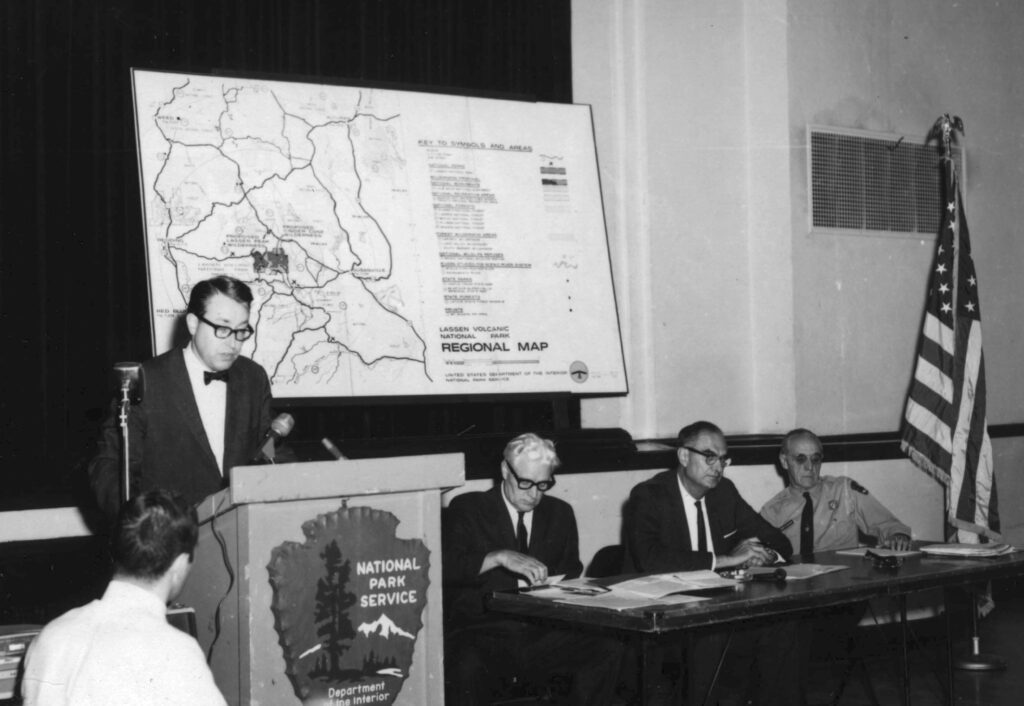
When Lassen Park was established in 1916, most of it was in a primitive state. There was a lot of internal debate as to what type of development should occur. The initial conclusion was that there would be only one road and the remainder of the park remain in its natural state. This approach did not sit well with the people living around the park, who were under the impression that it would be developed, bringing throngs of tourists, and providing an economic bonanza to them.
One of the problems was the private lands inside the park boundary—especially that of Drakesbad. Any park improvements would increase the value of these private holdings, thus adding to higher cost when the park would be in a position to acquire them. In 1935, it was decided to place the eastern portion of the park under a “primitive” designation for a period of ten years.
In the 1950s, the movement was growing to a seek a clear definition what a primitive and/or wilderness area consisted. This culminated in the passage of the Wilderness Act of 1964. A large segment of Lassen qualified for this designation. The question park officials had to determine was how much of the park should be designated as wilderness. Of course, individuals and organizations alike had their own opinion.
After numerous public hearings, written statements and other commentary the park recommended that 73,333 acres be designated as wilderness—nearly two-thirds of the park. Of course, not everyone was pleased with this decision. Organizations such as the Sierra Club and the Wilderness Society had urged for more land —101,000 acres, almost the entire park. Their proposals would encompass all the land in the park with the exception of the corridor of the loop highway and a few other improved properties. Ultimately, a compromise was reached. On October 19, 1972, President Richard Nixon signed the Lassen Volcanic Wilderness Act, involving 78,982 acres.